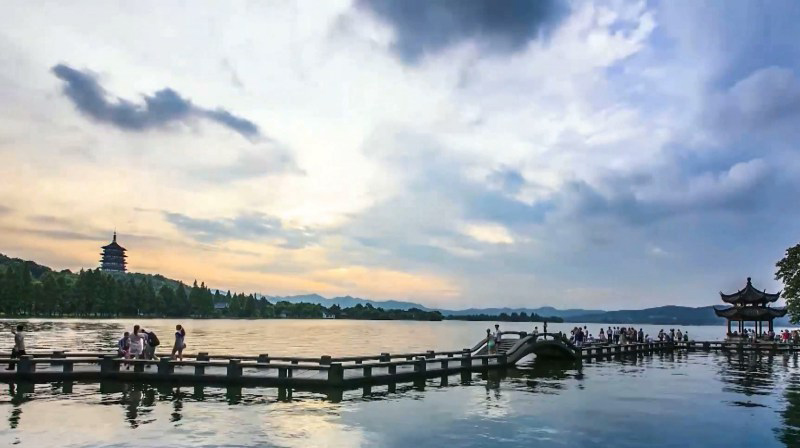Poetry, bridges, tea steered Hangzhou’s development

Bridges are a significant cultural symbol in Hangzhou. Since ancient times, Hangzhou has been a tourist attraction.
During the Tang and Song dynasties, Hangzhou’s green mountains and rivers attracted numerous literati and poets, who wrote magnificent poems and articles to praise the beauty of this city. Modern Taiwan-based poet Luo Fu (1928- ) once said that Hangzhou is fully qualified to be China’s “capital of poetry.”
Although these ancient literati are no longer around, their work still exerts an influence on Hangzhou’s cultural development. In the 21st century, the Chinese cultural industry developed at a rapid speed. Hangzhou rapidly re-emerged as a new force in the Chinese cultural industry and quickly became the “capital of cultural innovation.” In 2007, Hangzhou proposed a goal of becoming the center of cultural creative industry across the country. A report released in April indicates that Hangzhou’s cultural innovation capacity ranked third in mainland China.
The success of the G20 Hangzhou Summit has contributed to improving the reputation of Hangzhou on the world stage and has provided a broad platform for enhancing international exchanges in the cultural innovation industry. International exchanges will improve Hangzhou’s cultural innovation’s competitiveness and promote the “going out” project, which aims to spread Chinese culture abroad.
With the rise of the cultural industry, Hangzhou’s cultural symbols have gradually received international society’s attention.
Bridges are a significant cultural symbol in Hangzhou. Since ancient times, Hangzhou has been rich in bridges. In the Legend of White Snake, Xu Xian met Madame White Snake on the Broken Bridge; Su Xiaoxiao, a female poet in the Southern Qi Dynasty, was buried under the Xiling Bridge. The Six Bridges of the Su Causeway, Gongchen Bridge, Qiantang River Bridge and countless beautiful bridges enhance Hangzhou’s cultural heritage, connecting Hangzhou’s past with present. This September, the design of the logo of the G20 Hangzhou Summit is a bridge as well.
Legends are another cultural symbol in this city. The Legend of White Snake is the most famous one from Hangzhou. It tells the story of love between a man and a white snake spirit who met in West Lake. Ever since the Song Dynasty, almost 600 years ago, this story has passed down from generation to generation and has been adapted into Chinese operas, films and television series.
Hangzhou locals also have a deep love for tea. Tea is an indispensable part of Hangzhou’s culture. Enjoying the landscape and drinking tea are typical life styles for Hangzhou locals and this relaxed lifestyle is also a significant calling card, bringing new talent to Hangzhou to boost its creative industries.
